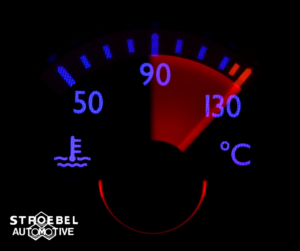Whether driving a sleek sports car or a rugged SUV, your vehicle’s cooling system ensures the engine runs efficiently and reliably. The cooling system prevents the engine from overheating by circulating coolant to absorb and dissipate heat.
The Importance of the Cooling System
The cooling system in a vehicle is designed to maintain an optimal engine temperature, allowing it to run smoothly. It comprises several components, including a radiator, a water pump, a coolant, a thermostat, and cooling fans. Together, these components work to remove excess heat from the engine, preventing damage caused by overheating.
Common Cooling System Problems
Despite their importance, cooling systems are not immune to problems. Below are some of the most common mechanical issues faced:
- Leaks: Coolant leaks are the most common cooling system problem. They can occur anywhere in the system due to corrosion, wear, or damage.
- Radiator issues: Blockages or leaks in the radiator can impede cooling efficiency.
- Faulty water pump: The water pump is the heart of the cooling system. A malfunction can lead to inadequate coolant circulation and engine overheating.
- Thermostat failure: A stuck thermostat can cause overheating if it’s closed or underheating if stuck open.
- Contaminated coolant: Over time, coolant can become contaminated, reducing its effectiveness in heat absorption and transfer.
Warning Signs of Cooling System Failure
It’s essential to recognize the warning signs of cooling system failure to prevent engine damage:
- Overheating: The most obvious sign is the engine overheating, indicated by the temperature gauge running higher than normal.
- Visible leaks: Puddles of coolant under the vehicle indicate a leak in the cooling system.
- Low coolant levels: Regularly needing to top off coolant can suggest a leak or excessive consumption.
- Unusual noises: A failing water pump may produce a whining or groaning noise.
- Steam from under the hood: Steam or smoke coming from under the hood suggests overheating and should be addressed immediately.
Troubleshooting the Cooling System
When facing cooling system issues, the following steps can help identify and resolve the problem:
- Check the coolant level: Ensure the coolant level is correct and that levels do not significantly drop between checks.
- Inspect for leaks: Look for visible signs of coolant leaks around the radiator, hoses, and under the vehicle.
- Test the thermostat: A faulty thermostat is a common cause of overheating. Replacing a malfunctioning thermostat can solve the problem.
- Check the radiator and water pump: Ensure the radiator is not clogged and the water pump is functioning correctly.
- Flush the coolant system: If the coolant is contaminated, flushing the system and replacing the coolant can improve efficiency.
Maintenance Tips for Cooling Systems
Preventive maintenance is key to avoiding cooling system problems:
- Regularly check coolant levels and top off as necessary.
- Replace the coolant based on the manufacturer’s recommendation.
- Inspect hoses and belts for wear and replace them when necessary.
- Keep the radiator and front grille clean of debris to ensure proper airflow.
The cooling system is pivotal for your vehicle’s longevity and performance. By understanding common problems, recognizing the warning signs of failure, and following through with regular maintenance and prompt troubleshooting, you can ensure that your vehicle remains in top condition, preventing costly repairs and inconvenient breakdowns.
Whether you’re a seasoned mechanic or a novice driver, staying informed about your vehicle’s cooling system is vital for a smooth and safe driving experience.


